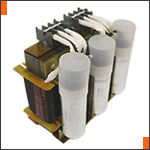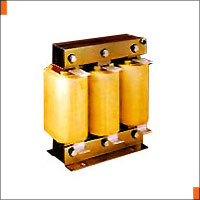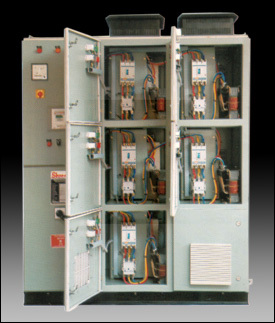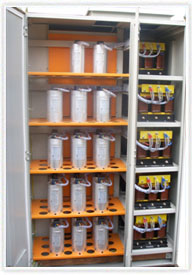We conduct Harmonic Analysis and Energy Audit to Electrical network systems and provide Complete Solution for industrial, Commercial & Utility in order to improve power quality through reactive power compensation and harmonic control.
- Electricity Act 2003: Energy Audit must for HT customers
- How can we move towards systematic Energy Conservation
- Does Energy Conservation in your electrical installation generate Harmonics?
- Are your Equipments & Electrical systems getting affected due to Harmonics?
- Are you ready to pay penalties for generating Harmonics?
- Are your neighbors generating Harmonics which are affecting your systems?
Complete Solution Package
- Measurements of Harmonics and Energy Audits in electrical systems
- Design & Recommendation of Tailor-made Power Solution to the Power Quality problems
- Designing, Manufacturing, Testing & Commissioning of product to achieve power quality improvement through system measurements
What is Harmonic?
The harmonic is defined as one of the components obtained from the breakdown of a periodic wave in the Fourier series. The order of a harmonic is further defined as the ratio between the frequency of the harmonic and the fundamental frequency of the periodic wave considered. Harmonic is current or voltage that appear on the electrical power system as a result of non-linear loads. A frequency that is integer multiples of the fundamental frequency of 50 Hz, the 3rd harmonic is 150 Hz, the 5th is 250 Hz etc. Harmonic Frequencies in the power grid are a frequent cause of Power Quality problems. Harmonic frequencies from 3rd to 25th are the most common range measured in Industries.
Where do Harmonics Come from?
Most types of equipment common in electrical systems today generate harmonics:
- Equipment containing electronics that control other apparatus, e.g. variable speed drives, soft starters, static compensators, rectifiers, etc.
- Arc furnaces
- In certain cases, transformers, reactors and rotating machines.
- Office / Home electronic appliances
- Harmonics are not only found in industrial networks. They can also spread into the distribution network and cause problems for other power users.
What problems can Harmonic cause?
- Increased losses, e.g. machines will operate at increased temperature and can be overheated
- Increased consumption in electric bills due to high copper and iron losses – KW & KWH
- Resonance problems between the inductive and capacitive parts of the power network
- Malfunctioning of control systems since electronic meters, relays, etc. are matched to the fundamental frequency
- Overloading of capacitors, leading to malfunctioning and premature aging
- Interference with telecommunications and computers
- Disturbances in ripple control systems
- High currents in neutral conductors
Designing a harmonic Filter
A harmonic filter usually consists of a capacitor which is connected in series with a reactor. The components are dimensioned to create a series resonance circuit for a required frequency. A harmonic filter works like a short circuit at one or more specified frequencies. We can help you to calculate and design filters which will reduce interference and interruption on your network. The various functions that a harmonic filter performs are enumerated as follows
- Reduces neutral currents
- Reduces transformer loading
- Enhances system protection
- Minimizes impact on distribution transformers
- Reduces local neutral to ground voltage
- Lowers peak phase current/average phase current
- Increases system capacity
- Improves power factor on non-linear loads
- Reduces total harmonic distortion
- Improves phase current & Voltage balance
Tailor made solutions – Each plant needs its own
Thorough know-how and experience is required to design harmonic filters properly. Each plant is unique and needs its own special technical solution. Both system and component know-how are essential to find the optimum solution in each individual case. An important component in the filter is the capacitor. Since it copes with the whole harmonic content, it must be designed with the greatest care.
What do PF Capacitors have to do with Harmonics?
In an industrial plant containing power factor correction capacitors, harmonics distortions can be magnified due to the interaction between the capacitors and the service transformer. This is referred to as harmonic resonance or parallel resonance. It is important to note that capacitors themselves are not main cause of harmonics, but only aggravate potential harmonic problems. Often, harmonic-related problems do not show up until capacitors are applied for power factor correction.
Fact Sheet for Harmonic Audit
- Pre-requisites We required the following details at the time of Auditing
- Single line diagram of plant showing the power distribution to different connected equipment.
- Last 6 months electric bills showing Max demand, tariff & Power Consumption
- Company representative who knows about the power distribution of plant should be available with our Engineer at the time of Audit
-
Instrument used for harmonic audit
- Harmonic analyzer – Oracle 3Ph 4 Wire System, Trinity Make
- Current probe 0 - 9999A Programmable CT Ratio
- General Terms
- 1 – 5 days required to conduct the audit depends with size of the plant
- Harmonic audit report shall be furnished within 5 working days
- Reference standard IEEE 519 – 1992 International standards for Harmonics
Contact Us for a Free Consultation on How We Can Help You with Your Power Quality Audit Needs.



